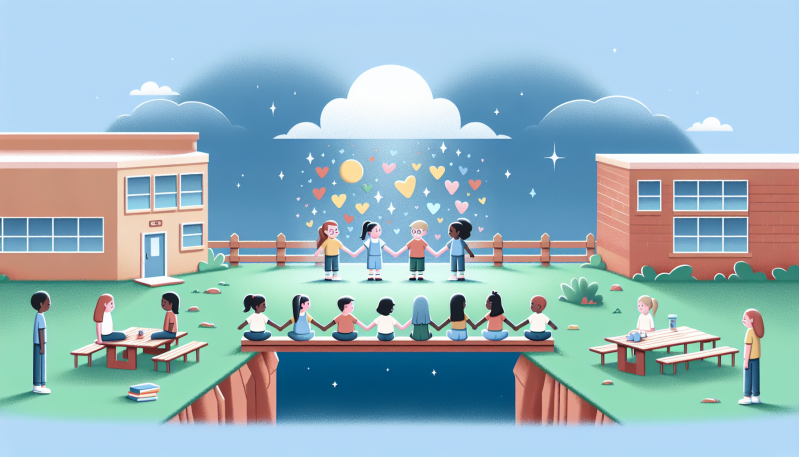As educators and parents, we have a pivotal role in shaping the social and emotional development of children. In the complex tapestry of school life, conflicts are inevitable. They can arise from a myriad of sources – misunderstandings, competition, differing values, or even just a bad day. However, these moments of discord are not just challenges to be quelled; they are also powerful opportunities for growth. By teaching children conflict resolution, we can not only promote mental health and kindness but also nurture a more inclusive, supportive, and resilient school culture.
Conflict management skills are cornerstone practices that help maintain a peaceful classroom environment, encourage respectful communication, and foster understanding. By equipping students with these vital tools, we enable them to independently address disputes, reduce instances of bullying, and lessen the feelings of isolation that often accompany unresolved issues among peers.
One of the first steps in conflict resolution education is to teach students to recognize and understand their own emotions, as well as those of others. This emotional literacy lays the groundwork for empathy, which is essential when navigating interpersonal disputes. For elementary students, this could involve activities like role-playing or picture books that discuss feelings. Middle school students might benefit from group discussions or scenarios that require them to step into another’s shoes. High schoolers, dealing with more complex social dynamics, can engage in debates and mediations that encourage critical thinking and advanced communication skills.
Educators can foster a proactive approach to conflict by creating a classroom culture where differing opinions are valued and open dialogue is encouraged. This setting helps students feel safe to express themselves and listen to others. Teachers can model constructive conflict resolution through their own behavior and by integrating cooperative learning activities that require students to work together to solve problems.
Additionally, schools can implement programs like peer mediation, where trained students help their peers work through conflicts, or ‘kindness weeks,’ where the focus is on acts of empathy and inclusion. These programs not only give students practical experience in managing disputes but also help in weaving a fabric of community support that undercuts the loneliness and isolation that often accompany conflict and bullying.
Parents are also critical allies in reinforcing conflict resolution skills at home. They can do this by encouraging open communication, teaching active listening, and practicing problem-solving skills during family discussions. For example, during a disagreement, parents can guide their children through a step-by-step process of identifying the problem, expressing their feelings, brainstorming solutions, and coming to an agreement.
In conclusion, conflict in the classroom, when approached with intention and care, can be a gateway to teaching children lifelong skills in communication, empathy, and collaboration. By consistently applying and reinforcing these strategies both at school and at home, we can help children navigate the complexities of human relationships. The end result is a generation of young individuals better equipped to handle the emotional challenges of life, thus nurturing a healthier, kinder, and more inclusive society.
As educators and parents, let’s commit to empowering our students with the conflict resolution strategies they need to build meaningful, lasting friendships and to thrive in all areas of life.


